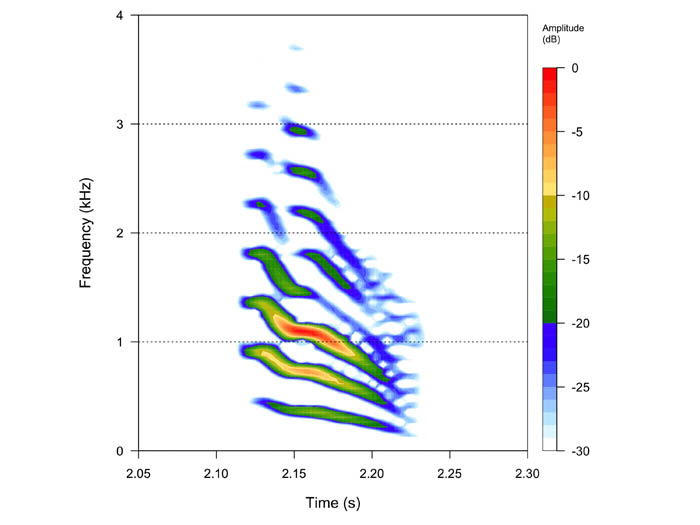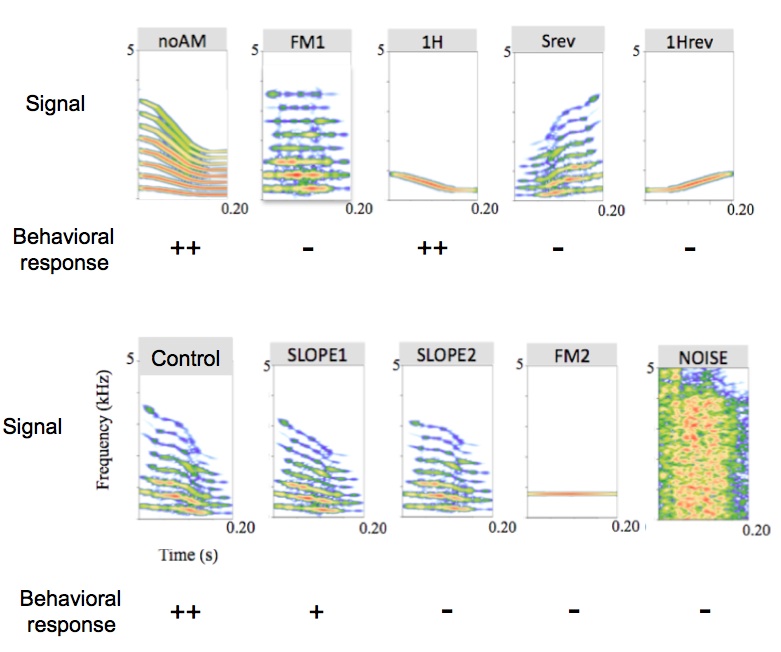The Crocodilian “Language”: Crocodiles and caimans share the same acoustic code
Nicolas Mathevon*– mathevon@univ-st-etienne.fr
Université de Lyon/Saint-Etienne, France
Thierry Aubin – thierry.aubin@u-psud.fr
Centre National de la Recherche Scientifique
Université Paris XI, France
Amélie Vergne – amelie.vergne@gmail.com
Université de Lyon/Saint-Etienne, France
*Corresponding author
Popular version of paper 1pAB1 presented at the 2013 165th ASA Meeting in Montreal, Quebec.
In crocodilians, maternal care is the rule. The female lays her eggs in the sand or in a nest made with vegetation and guards them until juveniles hatch. At maturity when still inside their eggs, hatchlings emit calls and are responsive to their siblings’ vocalizations. This within-clutch communication synchronizes hatching. The mother also responds to these hatching calls: she opens the nest (Fig. 1), helps the young to get out of the shells and usually takes them in her mouth to the river or pond.
Then, she attends her young several weeks after hatching, actively protecting them from predators. During this period, juveniles communicate acoustically with their siblings and with the mother (calls series sounding like “umph umph umph” ).

Crocodilians are split into two main families, Crocodilidae (e.g. Nile crocodile) and Alligatoridae (e.g. Alligator, caimans). We recorded calls from young juveniles of three different species (Nile crocodile Crocodylus niloticus, Spectacled Caiman Caiman crocodilus and Black Caiman Melanosuchus niger), and analyzed their acoustic structure. It appeared that calls could be easily distinguished between species using statistical methods of classification. Using playback experiments, we further tested to see if the animals could also discriminate between species calls. It appeared that juvenile Nile crocodiles (1 month old) were attracted to the loudspeaker whatever the species of the played-back calls, while they did not react to a noise.
We then modified the structure of the sound signals to see why calls from the caimans’ species were as efficient as the Nile’s calls to attract Nile crocodile juveniles. We found that the shape of the frequency modulation is the key parameter eliciting a behavioral reaction from juvenile crocodiles. When the original modulation was either suppressed or modified (signals FM1, Srev, 1Hrev, SLOPE2, FM2 in the figure), the signals hardly induced a behavioral response. Conversely, an altered call that kept the original frequency modulation shape (signals noAM, 1H, SLOPE1 in the figure) remained as efficient as the original call of the Nile crocodile (signal Control in the figure).
Listen to the altered call below
Listen to the original Nile call below


This experiment thus shows that juvenile calls of crocodilians share the same acoustic code. This may be problematic if different species live in the same habitat. However, in most cases the biggest species would chase the smallest one from its area, limiting the acoustic confusion between juveniles of different species.
Crocodilians together with birds are the modern representative of archosaurs, a group that also includes the extinct dinosaurs and pterosaurs. In both crocodilians and birds, sound signaling is important during parents-young interactions. The use of acoustic communication in the context of parental care is thus likely to be a shared behavioral feature by all archosaurs, including those of the past.

References:
- Vergne AL, Mathevon N (2008). Crocodile egg sounds signal hatching time. Current Biology 18, 12.
- Vergne AL, Mathevon N, Pritz MB (2009). Acoustic communication in crocodilians: From behaviour to brain. Biological Reviews 84, 391-411.
- Vergne AL, Aubin T, Taylor P, Mathevon N (2011). Acoustic signals of baby black caimans. Zoology 114, 313-320.
- Vergne AL, Aubin T, Martin S, Mathevon N (2012). Acoustic communication in crocodilians: information encoding and species specificity of juvenile calls. Animal Cognition 15, 1095-1109.
Website of the Bioacoustics Team: http://www.cb.u-psud.fr/index.html
Website of Nicolas Mathevon: https://sites.google.com/site/mathevonanimalcommunication/
Sounds
Spectacled Call: Call of a Spectacled caiman juvenile.
Modified Call: Modified call of a Nile crocodile juvenile. This call contains only one harmonics, but keeps the slope of the frequency modulation of the natural call. Nile juveniles do react to this sound.
Nile Call: Call of a Nile crocodile juvenile.
